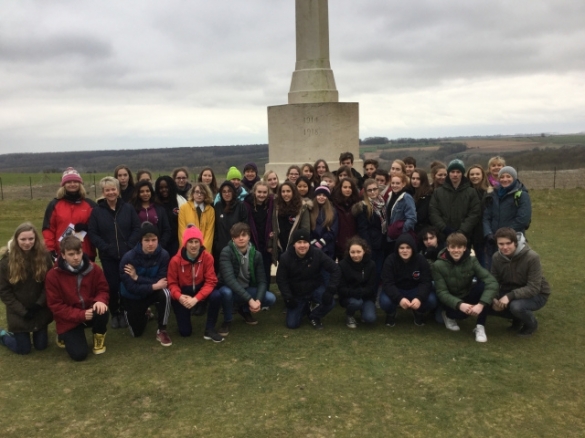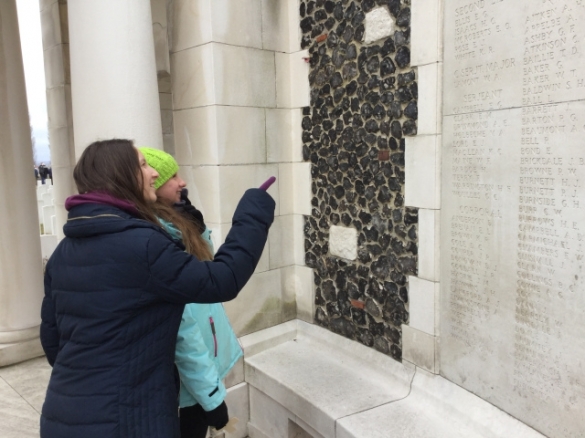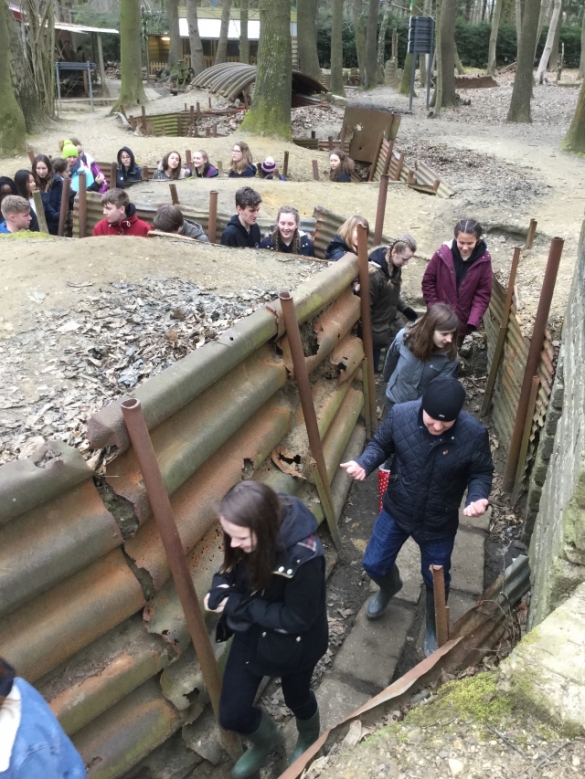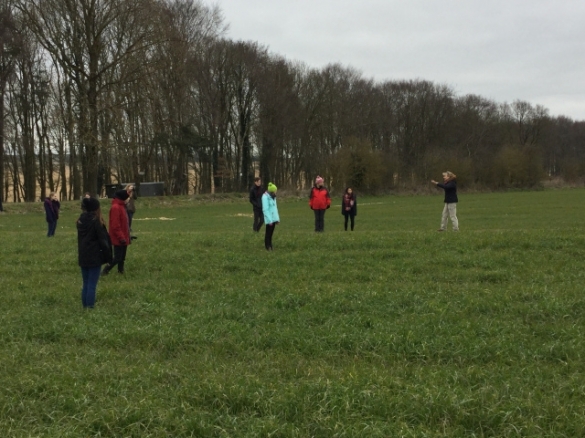22nd March 2016
Bringing the Great War home
Helen Snelson, Head of History at The Mount School in York, writes:
We have just completed the third shared visit to the battlefields of the Western Front between 15 and 16 year olds from The Mount and Millthorpe Schools. Once again, working in partnership has enriched the experience of the visit for everyone. This year we have also worked with Clements Hall Local History Group in preparation for our tour, and they have enabled us to bring the Great War home.

Mount and Millthorpe students at Thiepval
While we find that students find the topic of the First World War interesting and engaging, it needs careful planning to make sure that a visit to the Western Front develops that interest further and does not further propagate popular myths and legends. As our colleague Kate said to the students about the battlefields: ‘this is one of the biggest sources you will ever work with’. As with all sources, they need setting in their historical context if they are to be used as evidence to create historical narratives. At the same time, we do not want our students to simply engage with their minds. If they are untouched by the sheer scale of what they are seeing and able to rationalise it all away neatly, that would concern us. A good school visit to the battlefields should raise as many questions as it answers, and enable students to feel as well as think about what they are seeing.

Finding names on the Tyne Cot memorial
We used Hull-Zeebrugge ferries to get to Belgium. Disembarking on Saturday morning, we recapped the causes of the War as we made our way to our first stop: Lijssenhoek CWGC cemetery. It is an excellent place at which to start a battlefields tour, as it is behind the front line, at a hospital site on the railhead, and contains the bodies of men (and one woman) from Britain and beyond, including China and Germany. Immediately we can engage students with the Empire, the scale of casualties and the reach of the War, the way British war dead are commemorated, the work of the CWGC and the personal stories behind the statistics. Taking the stories of John Raphael, an elite sportsman; Nellie Spindler, a Wakefield nurse, and Donald Sneddon, an under-aged soldier, we get students to think about the diverse backgrounds of the people who found themselves caught up in this War. A visit to Passendaele museum then enables students to develop their knowledge and understanding of the Ypres Salient and trench warfare. We follow this with visits to Tyne Cot (the largest GWGC cemetery in the world) and Langemarck German cemeteries. The contrast is stark and needs explaining. After time to explore the Hill 62 preserved trenches, our day in the Ypres Salient finishes with the Menin Gate cemetery, which the students often find surprising. It enables them to see that the War still has resonance today.

Exploring preserved trenches at Hill 62
It is important not to bamboozle students with unnecessary detail about regiments, brigades, military manoeuvres and so forth. These are fascinating to some people, but most teenagers do not have the required contextual knowledge or understanding of terminology to make any sense of them. Instead, when we stand on the Serre Road, we model how many men of the Pals Battalions fell on 1 July 1916 using the whole group.

Learning about the casualties of 1st July 1916
We continually set the sites we visit in the wider 1914-18 context and engage with personal stories. This year we were helped to do that by Clements Hall Local History Group. On the Somme battlefield we took their work on the Cherry Street School memorial and focused on the men from the School whose names are on the Thiepval memorial to the missing of the Somme battlefield. It can be hard for students to engage with this large, imposing edifice. This year they did, as we asked them to find the names of one of the men and to read his story, including his address and a photograph of the house he came from (if it still exists). We also had several students with family stories, and we wove these into the overall War narrative to help them to see the people in the larger story. One of our student’s French great grandfather lived in the area, then fought at Ypres, Verdun and on the Somme, before being nursed by the woman who became her great grandmother and returning to rebuild his life. This story, and the others like it, helped us to bring the Great War home for another group of students.



